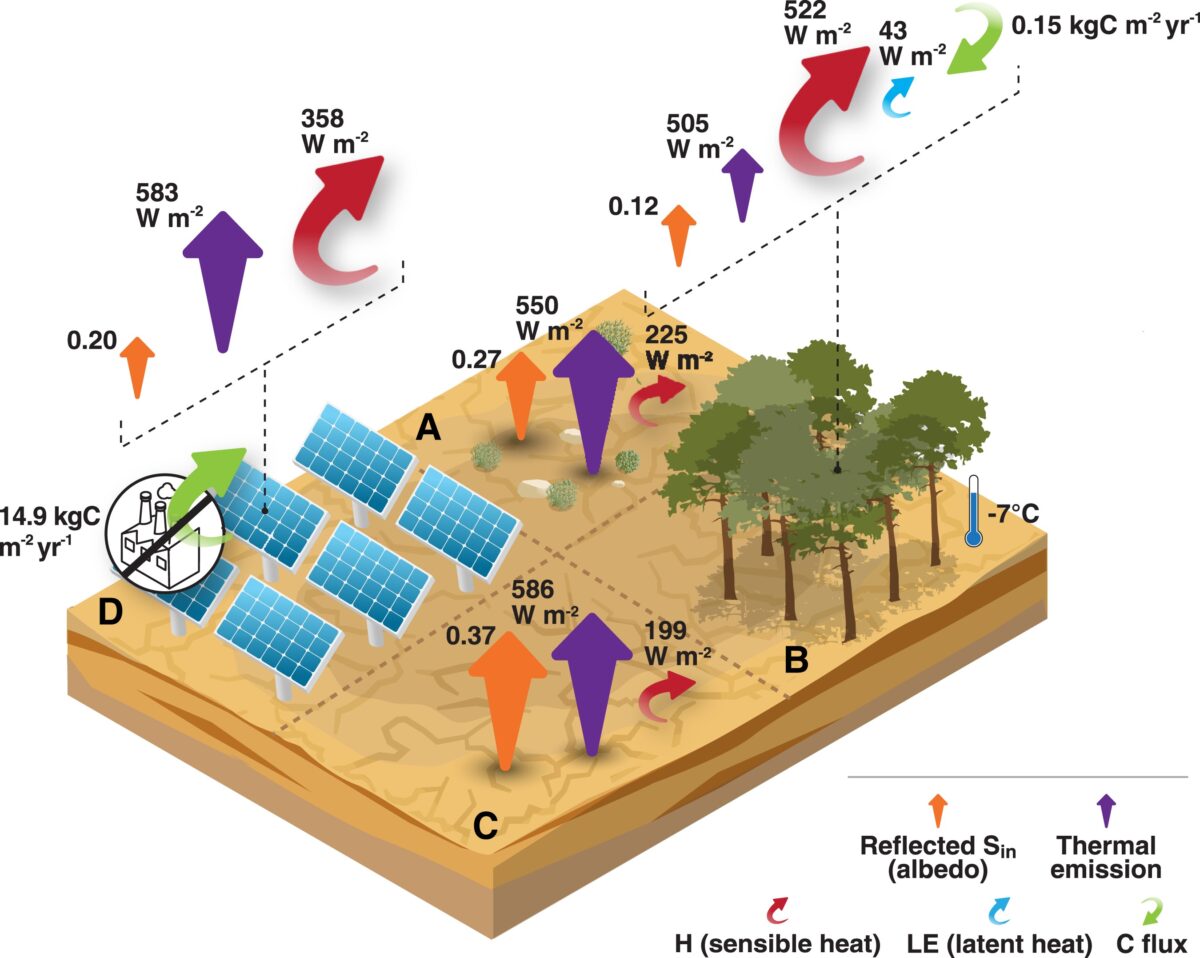
Israeli scientists calculated how long it would take photovoltaic power plants and reforestation projects to offset the warming effects of darkening land. The results show that in dry land, photovoltaic power generation is more than 50 times more efficient than afforestation.
Researchers at Israel's Weizmann Institute of Science compared the competition between ground-based photovoltaics and land-based reforestation in fighting climate change and found that the former may have a better chance.
For their simulations, the scientists created a new metric they called "break-even time" (BET). It calculated how long it might take for both technologies to have an impact on carbon emissions and offset the warming effects of darkening land.
"Photovoltaics can significantly reduce anthropogenic carbon emissions. Forest restoration can play an important complementary role in climate change mitigation efforts by providing a direct means to actively remove atmospheric carbon," the researchers said. "However, both have significant impacts on land area." There is higher demand, which could lead to competition for land with forests."
To examine which land use was more efficient, the scientists conducted a series of measurements in southern Israel, which they say is highly representative of dry land. "Drylands make up a large portion of the Earth's land surface, with nearly half of them semi-arid, so potential reforestation projects are of concern. However, they are also likely to host a significant proportion of utility-scale photovoltaic farms," the group said Explain that this is the point of it.
Discover
As for the impact of photovoltaics on surface temperatures, the academics conducted research on photovoltaic fields in an extremely arid region of the Arava Valley in Israel, adjacent to Kibbutz Keturah. The oil field covers an area of 75,600 square meters and has an installed capacity of 4.9 MW. This is compared to background measurements of the same area.
According to their measurements, the sensible heat of the PV plant is 359 W/m2. In comparison, the surrounding background is 199W/㎡. The albedo levels are 0.2 and 0.37 respectively. However, according to calculations, photovoltaic power stations can suppress carbon emissions by 14.9 kg·m per year.
As for the impact of afforestation on high temperatures, scientists conducted measurements in the Yatil Forest on the northern edge of the Negev Desert in Israel. It is situated on 2,800 hectares of green belt, planted mainly with Jerusalem pine trees. Data from there are then compared to data collected from the background desert.
In this example, the measurement shows that the sensible heat in the afforestation area is 522 W/㎡ and the background is 225 W/㎡. The albedo level is 0.12 in afforestation areas and 0.27 in desert areas. It is calculated that the amount of carbon sequestered per year due to photosynthesis is 0.15 kg/㎡.
"The results show that in drylands, photovoltaic farms are more than 50 times more efficient than afforestation," the researchers said, adding that dryland photovoltaic farms take about 1.4-3.6 years to break even, while afforestation takes It will take 94-175 years to break even.
temperate and tropical climate
Additionally, the researchers then used their method to calculate break-even times for photovoltaic power generation and reforestation in other climates, namely temperate and tropical climates. The data are based on previous studies conducted in Germany and Panama, respectively. The research results were published in "Photovoltaic power generation efficiency is significantly better than afforestation efficiency in global climate change mitigation strategies" published in "PNAS Nexus".
"Although the relative efficiency of afforestation relative to photovoltaics increases significantly in more temperate climates, the BET rate of photovoltaics is still about 20 times faster than that of afforestation," they added. They noted that in tropical and temperate climates, The time required for photovoltaic power generation will be less than one year, 18.5 years for temperate afforestation, and 15.4 years for tropical afforestation.
“Photovoltaics could prevent far more carbon emissions than afforestation could absorb,” they concluded. “However, active removal of past carbon emissions and possible long-term storage in the form of biomass and soil organic matter could provide additional opportunities for Afforestation provides important advantages. Forests also provide many other ecological benefits compared to this purely climate perspective."